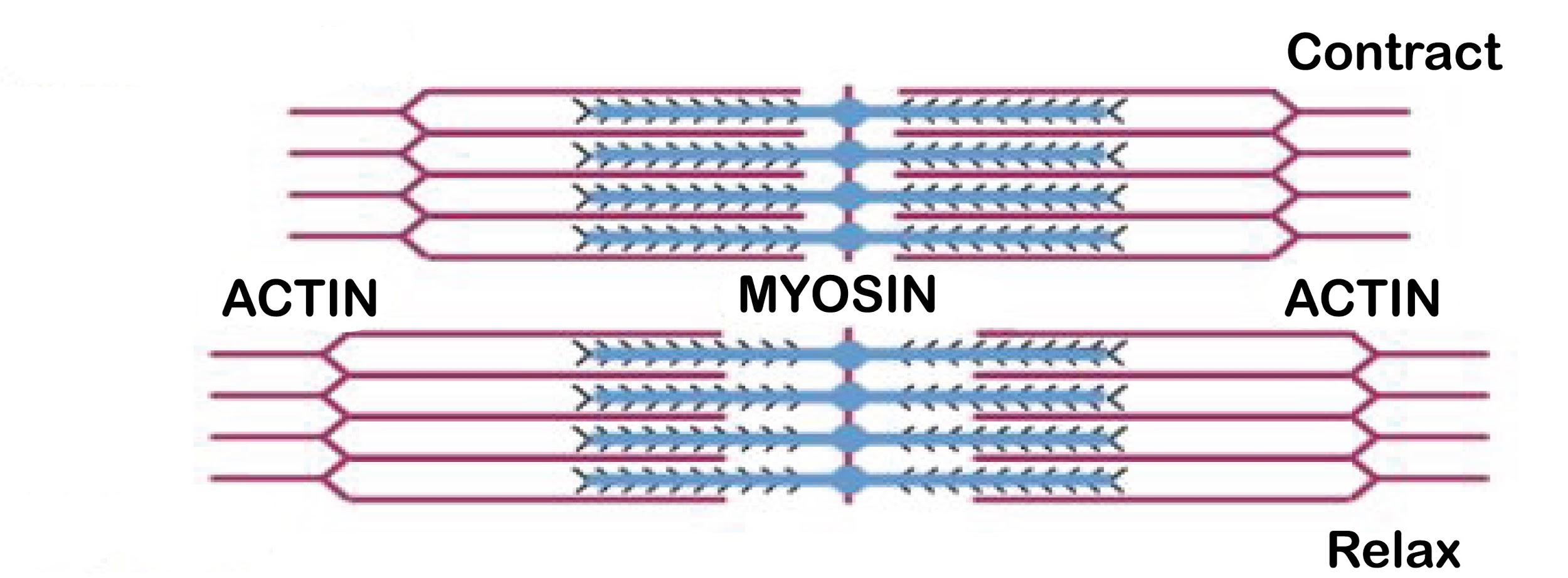
Which of the following is a direct source of energy for muscle contraction?
(a)ATP
(b)Creatine phosphate
(c)Lactic acid
(d)Both (a) and (b)
Answer
552.9k+ views
Hint: Energy is required by the myosin filament to break the cross-bridge formation with the actin filament which is responsible for muscle contraction. The direct source of energy in muscle contraction comes from the molecule which is also known as the energy currency of the cell.
Complete answer:
The direct source of energy for muscular contraction is ATP and creatinine. ATP binds to myosin after which it is hydrolyzed to release energy. This energy is utilized by myosin to reach its high-energy state to separate from the active site of the actin filament causing contraction. Creatine phosphate is used to regenerate ATP in the body and thus it is also a direct source of energy during muscle contraction.
Additional Information: Let us understand the cross-bridge formation in detail.
-The best explanation for the mechanism of muscle contraction is the sliding filament theory which states that contraction occurs by the sliding of thin filaments over the thick filaments.
-The muscle contraction starts with the release of ${ Ca }^{ ++ }$ ions which bind to the subunit of troponin on actin to expose the active sites for myosin.
-Myosin utilizes the energy that was released during hydrolysis of ATP and bings to the actin filament to form a cross-bridge. Then the myosin moves inwards causing the actin filaments to be pulled inwards as well.
-This causes shortening of the length of sarcomere as well as the muscle and thus is known as contraction.
-A new ATP binds to the myosin causing it to break the cross-bridge formation. Now the free myosin binds with a new actin filament to repeat the events mentioned above.
So, the correct option is ‘Both (a) and (b)’.
Note: -The initiation of muscle contraction is done by a signal that is sent from the central nervous system (CNS).
-The junction that is formed between the motor neuron and muscle fiber is known as neuromuscular junction or motor-end plate.
-Muscle cells have a red-colored pigment known as myoglobin whose function is to store oxygen.

Complete answer:
The direct source of energy for muscular contraction is ATP and creatinine. ATP binds to myosin after which it is hydrolyzed to release energy. This energy is utilized by myosin to reach its high-energy state to separate from the active site of the actin filament causing contraction. Creatine phosphate is used to regenerate ATP in the body and thus it is also a direct source of energy during muscle contraction.
Additional Information: Let us understand the cross-bridge formation in detail.
-The best explanation for the mechanism of muscle contraction is the sliding filament theory which states that contraction occurs by the sliding of thin filaments over the thick filaments.
-The muscle contraction starts with the release of ${ Ca }^{ ++ }$ ions which bind to the subunit of troponin on actin to expose the active sites for myosin.
-Myosin utilizes the energy that was released during hydrolysis of ATP and bings to the actin filament to form a cross-bridge. Then the myosin moves inwards causing the actin filaments to be pulled inwards as well.
-This causes shortening of the length of sarcomere as well as the muscle and thus is known as contraction.
-A new ATP binds to the myosin causing it to break the cross-bridge formation. Now the free myosin binds with a new actin filament to repeat the events mentioned above.
So, the correct option is ‘Both (a) and (b)’.
Note: -The initiation of muscle contraction is done by a signal that is sent from the central nervous system (CNS).
-The junction that is formed between the motor neuron and muscle fiber is known as neuromuscular junction or motor-end plate.
-Muscle cells have a red-colored pigment known as myoglobin whose function is to store oxygen.

Recently Updated Pages
Why are manures considered better than fertilizers class 11 biology CBSE

Find the coordinates of the midpoint of the line segment class 11 maths CBSE

Distinguish between static friction limiting friction class 11 physics CBSE

The Chairman of the constituent Assembly was A Jawaharlal class 11 social science CBSE

The first National Commission on Labour NCL submitted class 11 social science CBSE

Number of all subshell of n + l 7 is A 4 B 5 C 6 D class 11 chemistry CBSE

Trending doubts
What is meant by exothermic and endothermic reactions class 11 chemistry CBSE

10 examples of friction in our daily life

One Metric ton is equal to kg A 10000 B 1000 C 100 class 11 physics CBSE

1 Quintal is equal to a 110 kg b 10 kg c 100kg d 1000 class 11 physics CBSE

Difference Between Prokaryotic Cells and Eukaryotic Cells

What are Quantum numbers Explain the quantum number class 11 chemistry CBSE




